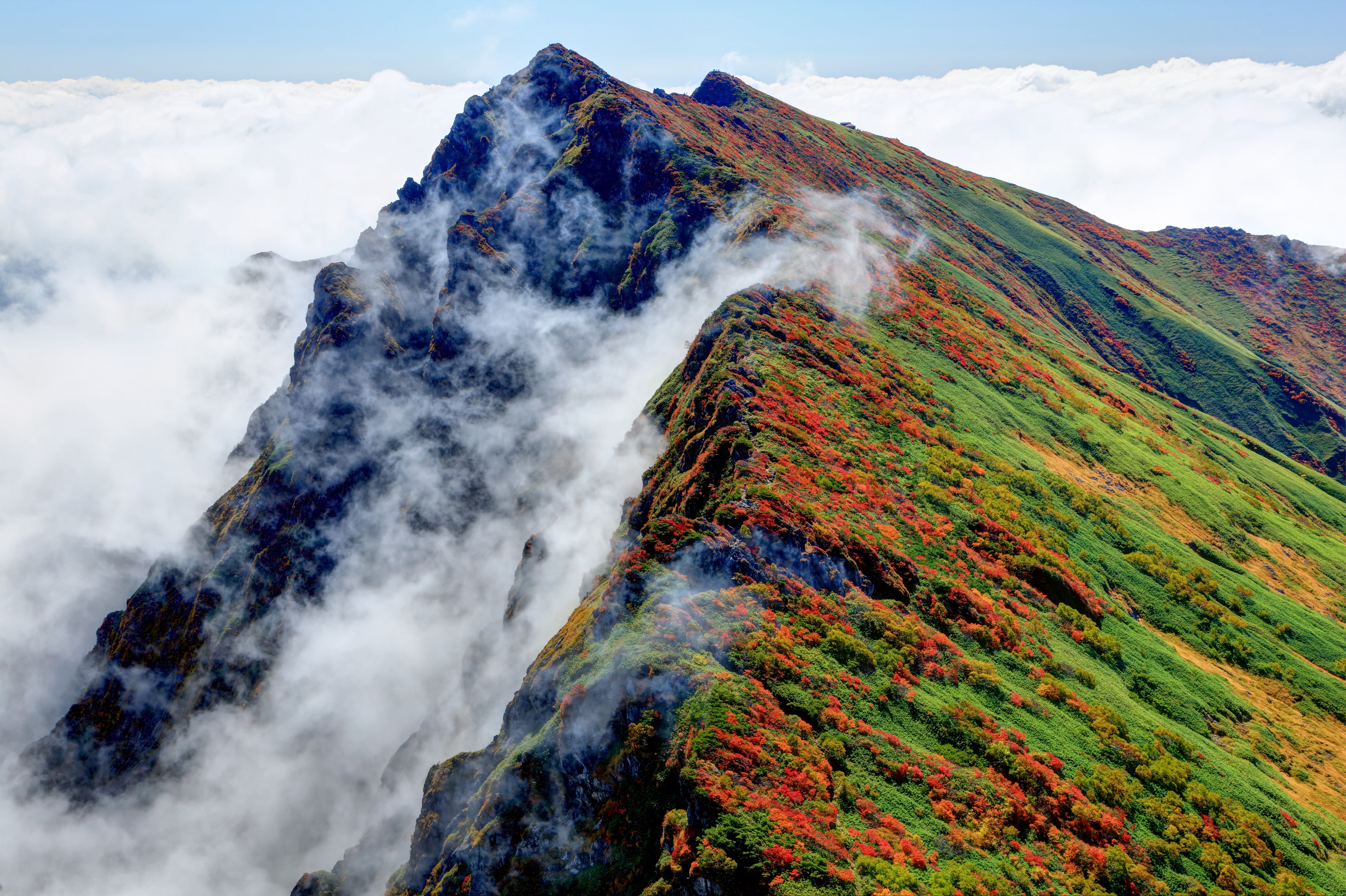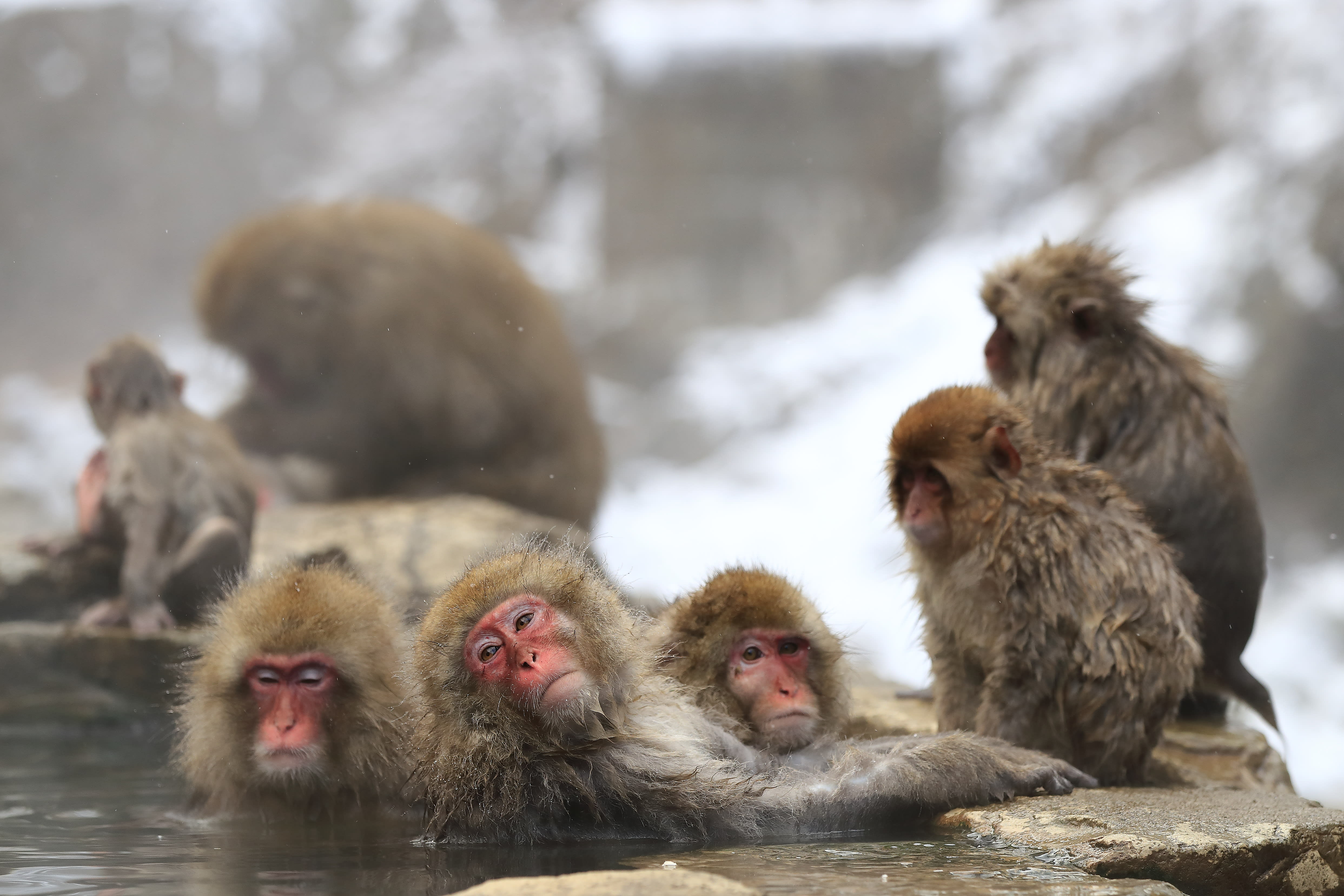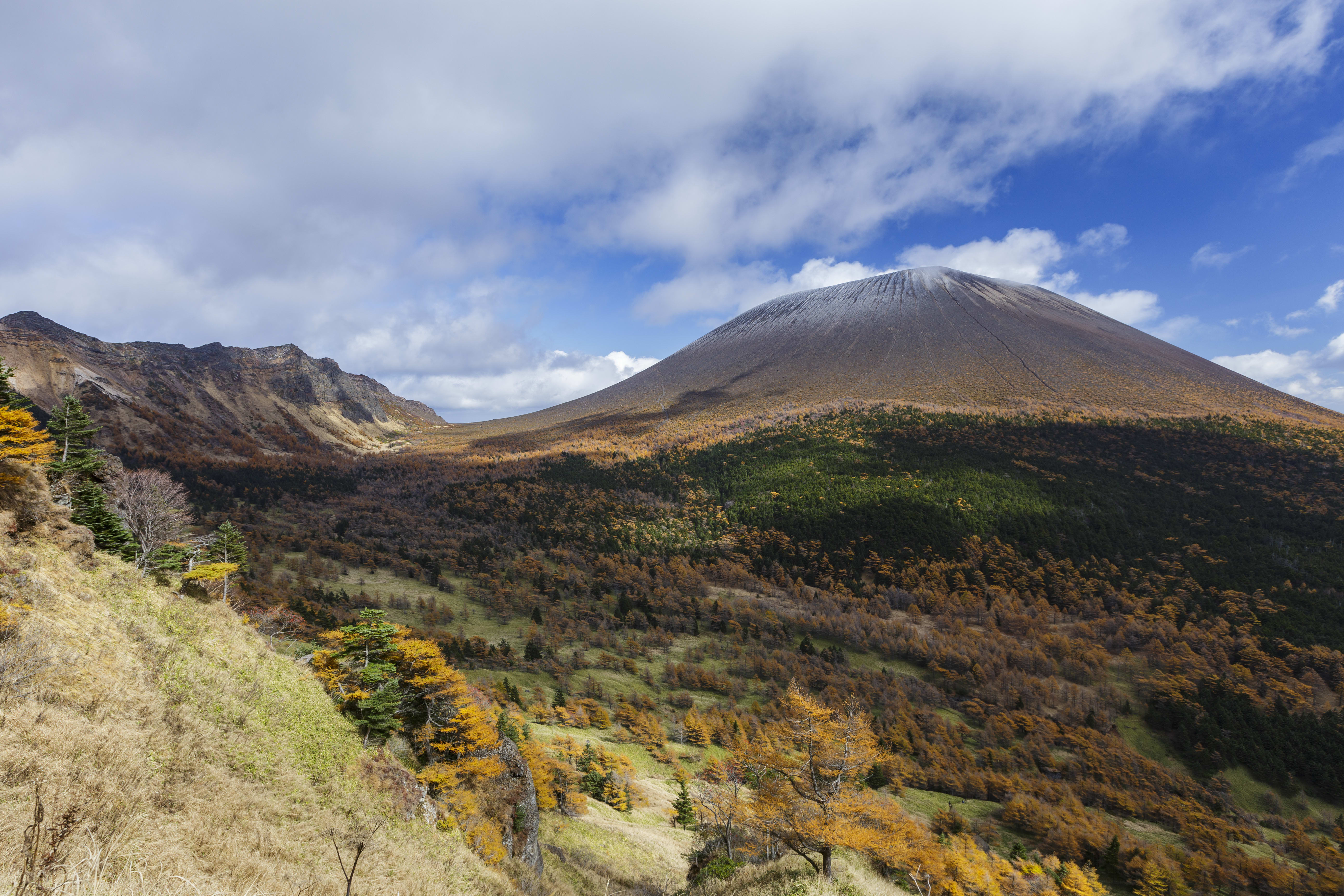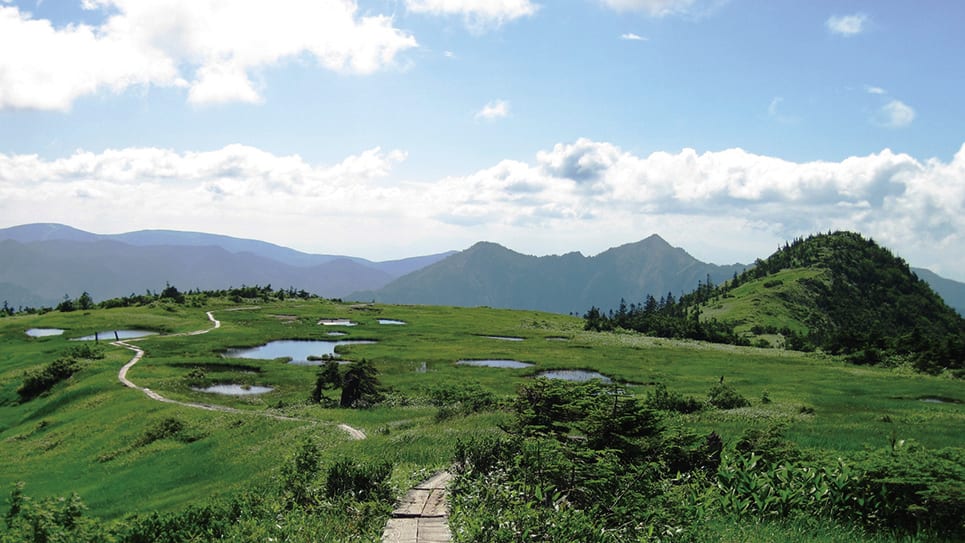Mount Naeba and Tanigawa Mountain Range
The mountain peaks in the north are covered with broad marshes and ponds. Mount Naeba, an extinct volcano, is home to the Naeba ski slopes. This lava highland has a high moor at the peak, and the foot of the mountain is covered in Japanese beech forests that date back more than 100 years.
The towering Tanigawa mountain range northeast of the park includes several peaks in the 2,000-meter range—Mount Tanigawa, Mount Shigekura, Mount Mantaro and Mount Tairappyo, a volcano. You’ll also find Ichinokurasawa Gorge, which has panoramic views of the Tanigawa range and a sheer rock wall. The gorge is a perennial favorite of expert rock climbers. The ascent requires proper equipment and training, though, so only scale it if you’re very experienced. A ropeway and lifts provide an easier way to view this breathtaking mountain range.

Mount Tanigawa
Shiga Highland and Mount Kusatsu-Shirane
The beautiful highland area of Shiga Kogen, set in the middle of the park, was created by intense lava flows. You’ll find Siberian dwarf pines here, and alpine flowers during the warmer months. In the winter, the world-class ski resort here attracts a stream of visitors eager to slalom through its deep powder. Join a guided backcountry snow tour to fully enjoy the stunning landscapes.
You can book a trekking tour of Shiga Kogen that takes in Shibuike Pond, Shijuhachiike Marshland and the beautiful Onuma Pond, as well as trekking to the top of Mount Maeyama, where there are expansive views of Mount Yokote.
At the summit of Mount Yakebitai in the Shiga Highland area is Chigoike Pond. The pond is surrounded by a moor inhabited by golden eagles, Japanese stoats and a variety of frogs and salamanders.
To the south of Shiga Highland is Mount Kusatsu-Shirane (2,160 m), a volcano that has a number of crater lakes around its summit and otherworldly volcanic terrain. The largest of the crater lakes, cobalt-green Lake Yugama, has a diameter of 300 meters and is one of the world’s few acidic lakes.
The area is renowned for its ancient onsen hot spring baths, heated by volcanic activity. One of the oldest and most popular onsen resorts is Shima Onsen in the eastern part of the park, ensconced by the mountains and offering the perfect valley retreat.
To the west in the park is the popular Jigokudani Yaen Koen, a hot spring area where you can see wild macaques known as the “snow monkeys” enjoying a bath in the warm, healing waters.

Jigokudani Yaen Koen Snow Monkey
Mount Nekodake and Mount Asama
Mount Nekodake (2,207 m) is in the park’s western end, and adjacent to Mount Azumaya, where there are often sightings of the goat-like Japanese serow.
In nearby Yunomaru Highland, every summer there is a flourish of color from the 600,000 Japanese azalea shrubs, while Ikenotaira Marsh is known for its displays of irises and rosebay.
Mount Asama, to the south, one of Honshu’s most active volcanoes. At the mountain’s northern foot is rugged Onioshidashi Park, with wild formations of lava rock flung here during Mount Asama’s big blowup in 1783. The smoking mountain is surrounded by a desolate volcanic landscape.
Combine a trip to this fascinating park with a visit to the upmarket mountain resort of Karuizawa, where you can hike, cycle or play golf in the summer, and ski and ice skate in the winter. There are plenty of pensions to choose from here if you plan to stay a day or more.

Mount Asama
Culture
The volcanic activity within Joshin’etsukogen National Park created a host of hot springs, and hot spring resorts followed, including Shima Onsen, Kusatsu Onsen, Manza Onsen, Kazawa Onsen and Yamada Onsen. These places have attracted a number of famous writers throughout their long histories, such as haiku poet Kobayashi Issa (1763–1828).
Historically, the park had a spiritual side as well. People would come to see sacred peaks such as Mount Naeba and Mount Tanigawa, and meditate and pray at Yonako Falls, near Mount Nekodake. The park was a place for mountain spiritual training for many centuries. Practitioners of Shugendo—a folk religion blending different faiths and beliefs—would often worship near the falls and in the mountains.

Mount Naeba























